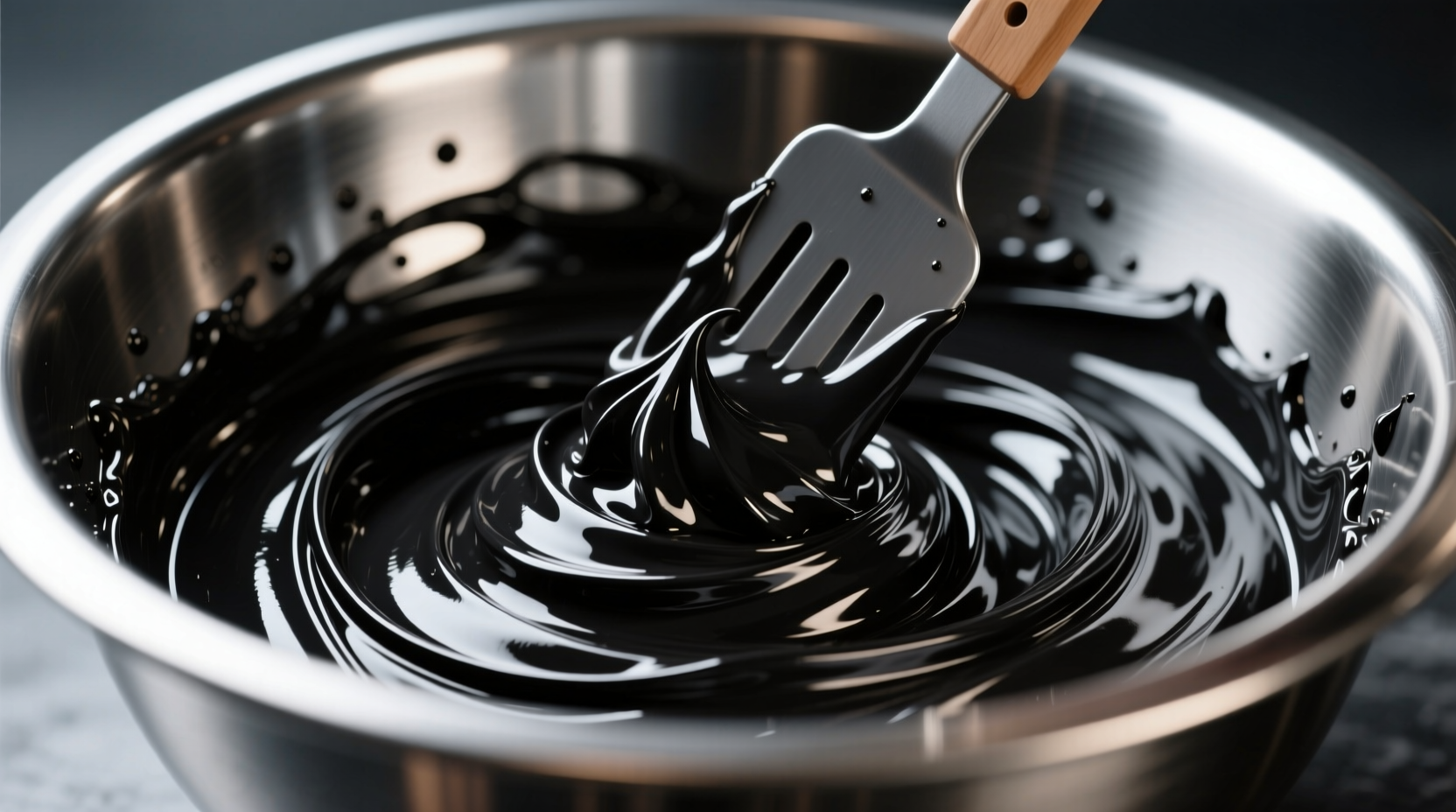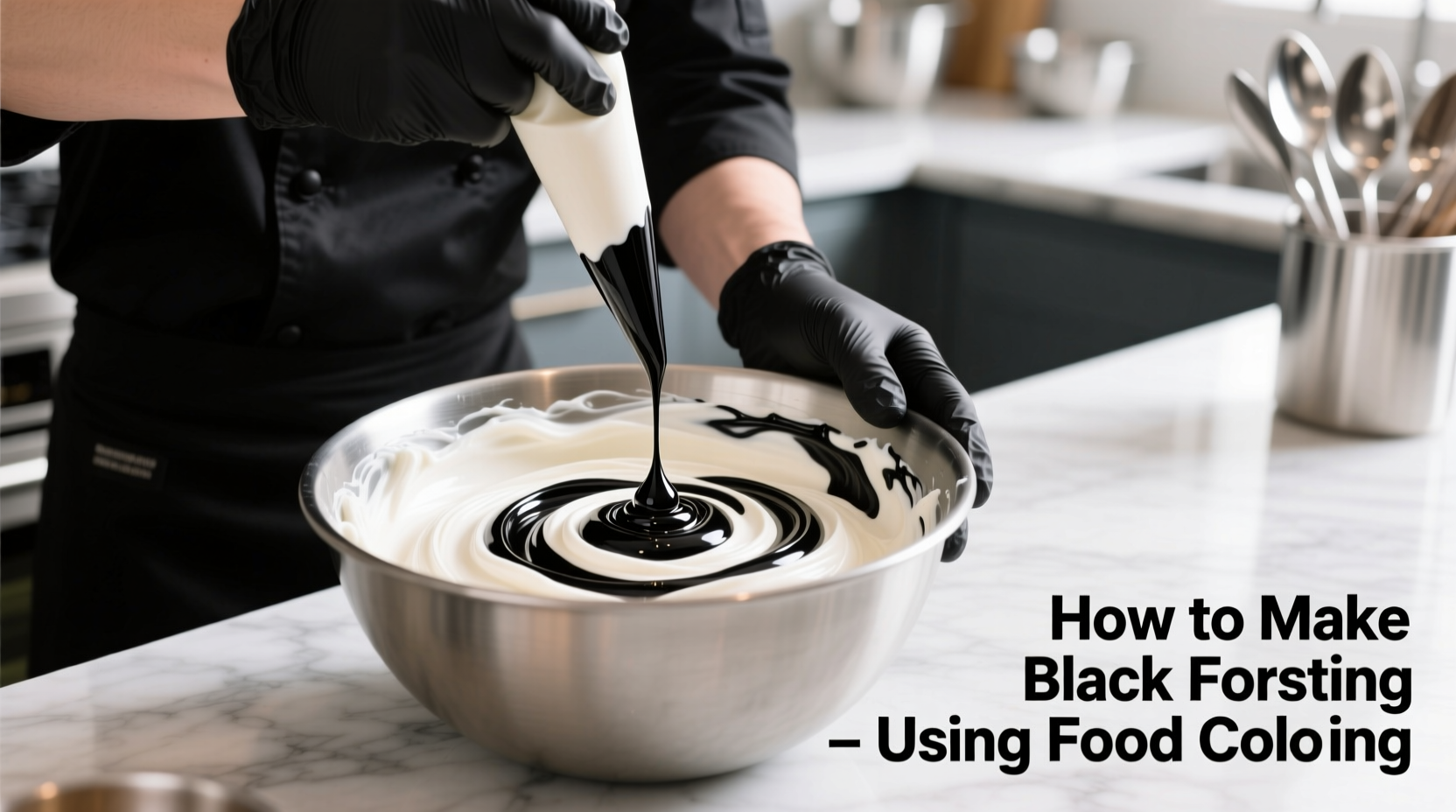The Black Frosting Challenge: Why It's Not as Simple as It Seems
Many home bakers struggle to create authentic black frosting, often ending up with muddy gray or brown hues. This happens because black requires an exceptionally high concentration of coloring that liquid dyes simply can't provide without ruining your frosting's texture. Professional cake decorators universally recommend using professional-grade gel coloring for this specific purpose.
Why Gel Coloring Is Non-Negotiable for Black Frosting
Liquid food coloring contains too much water, which will thin your frosting and prevent proper consistency. Gel colors concentrate pigment without excess liquid, maintaining your frosting's structure. The America's Test Kitchen research confirms that gel colors deliver up to 10 times more concentrated pigment than liquid alternatives.
| Coloring Type | Pigment Concentration | Impact on Frosting Texture | Black Color Achievement |
|---|---|---|---|
| Liquid Food Coloring | Low (5-10%) | Significantly thins frosting | Impossible to achieve true black |
| Gel Food Coloring | High (40-60%) | Minimal texture impact | True black achievable |
| Powdered Coloring | Moderate (25-35%) | Slightly dries frosting | Possible but less consistent |
Step-by-Step: Creating Perfect Black Frosting
What You'll Actually Need
- 2 cups (452g) high-quality vanilla buttercream or chocolate buttercream base
- 1-1.5 teaspoons professional black gel food coloring (Wilton or AmeriColor)
- 1-2 teaspoons clear vanilla extract (to counter potential chemical taste)
- Rubber spatula for thorough mixing
- Sturdy electric mixer
The Critical Mixing Process
- Start with chocolate buttercream if possible—this creates a darker base that requires less coloring
- Beat frosting on medium speed for 3 minutes to incorporate air
- Add coloring in 1/4 teaspoon increments, mixing thoroughly after each addition
- Scrape bowl sides frequently to ensure even distribution
- Continue until mixture reaches deep charcoal gray (not black yet)
- Cover and refrigerate for 4-6 hours—the color will deepen to true black

When Black Frosting Works Best (and When It Doesn't)
Black frosting performs optimally in specific contexts while presenting challenges in others. Understanding these boundaries prevents baking disasters:
- Works Best: For themed cakes (Halloween, gothic weddings), decorative accents, and as a base for edible gold/silver accents
- Limited Success: On hot days (color may bleed), with highly detailed piping (requires stiffer consistency)
- Avoid: As a primary flavor component for children's cakes (taste concerns), on fondant-covered cakes (may stain)
Troubleshooting Common Black Frosting Problems
"My frosting turned gray, not black!"
This happens when insufficient coloring is used or liquid coloring was substituted. Add more gel coloring 1/8 teaspoon at a time, remembering that the color will deepen over several hours. Never add more than 1.5 teaspoons per 2 cups of frosting to avoid chemical taste.
"The black frosting tastes weird!"
Professional gel colors contain more concentrated flavor compounds. Counteract this by adding 1 teaspoon clear vanilla extract or a pinch of salt. Chocolate-based frosting also masks artificial flavors more effectively than vanilla.
"The color changed after I piped it!"
Black frosting continues oxidizing after application. Allow at least 4 hours between frosting application and final presentation for color stabilization. Store finished cakes in a cool, dark place—light accelerates color degradation.
Storage and Usage Tips You Won't Find Elsewhere
Black frosting behaves differently than standard colors. The Cake Decorators Resource documents that black buttercream maintains optimal color for 3-4 days refrigerated, compared to 5-7 days for other colors. Always bring to room temperature and remix before use—never add liquid to adjust consistency as this dilutes the color.
For special occasions requiring absolute color precision, prepare your black frosting 24 hours in advance. The extended resting period allows complete color development and flavor integration, resulting in richer black and reduced artificial taste.











 浙公网安备
33010002000092号
浙公网安备
33010002000092号 浙B2-20120091-4
浙B2-20120091-4